January 2018 | BIPS Research Grant
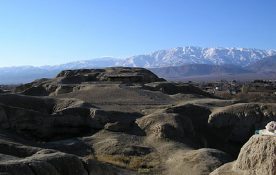 Tappeh Sialk on the outskirts of modern Kashan is one of the most important pre-Achaemenid archaeological sites in the Middle East, but despite a series of archaeological excavations there it remains poorly known outside academic circles. In an attempt to demonstrate the global significance of Sialk, not just to the scholarly community but to a wider public, the Iran Heritage Foundation organised an international conference about Sialk at Asia House on 31st March 2017 with speakers from Iran, France, US and UK. At the end of this first seminar, the participants approved a series of recommendations one of which was that there should be a follow-up conference in 2018. It was hoped that all the participants in the first seminar would return with revised papers, and it would also be an opportunity for scholars who were unable to attend in 2017 to come and present papers. This second international conference was therefore arranged at Asia House on 2nd-3rd July 2018 and was attended by nearly 80 people including the Iranian Ambassador to the UK, HE Dr Hamid Baeidinejad. As before the audience was truly international, with participants from Australia and Germany as well as Iran, France, US and the UK. It was very fortunate that in the end 10 colleagues were able to come from Iran.
Tappeh Sialk on the outskirts of modern Kashan is one of the most important pre-Achaemenid archaeological sites in the Middle East, but despite a series of archaeological excavations there it remains poorly known outside academic circles. In an attempt to demonstrate the global significance of Sialk, not just to the scholarly community but to a wider public, the Iran Heritage Foundation organised an international conference about Sialk at Asia House on 31st March 2017 with speakers from Iran, France, US and UK. At the end of this first seminar, the participants approved a series of recommendations one of which was that there should be a follow-up conference in 2018. It was hoped that all the participants in the first seminar would return with revised papers, and it would also be an opportunity for scholars who were unable to attend in 2017 to come and present papers. This second international conference was therefore arranged at Asia House on 2nd-3rd July 2018 and was attended by nearly 80 people including the Iranian Ambassador to the UK, HE Dr Hamid Baeidinejad. As before the audience was truly international, with participants from Australia and Germany as well as Iran, France, US and the UK. It was very fortunate that in the end 10 colleagues were able to come from Iran.
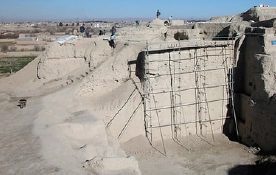 On the morning of 2nd July, before the start of the Sialk conference, the opportunity was taken to hear brief presentations given by four Iranian participants from a training scheme organised in Oxford by the project Endangered Archaeology in the Middle East and North Africa (EAMENA) and sponsored by IHF. The scheme provided for a two-week training course in cultural heritage protection, and in their presentations the Iranian participants described their own projects and how they had benefitted from the course. Those who had taken part were Maliheh Chamany, Dr Saman Heydari-Guran, Dr Hamidreza Hayhani and Dr Armineh Kaspari-Marghussian. There were also presentations about EAMENA by Dr Robert Bewley and Dr Bijan Rouhani, and by Dr Dan Lawrence, one of the trainers.
On the morning of 2nd July, before the start of the Sialk conference, the opportunity was taken to hear brief presentations given by four Iranian participants from a training scheme organised in Oxford by the project Endangered Archaeology in the Middle East and North Africa (EAMENA) and sponsored by IHF. The scheme provided for a two-week training course in cultural heritage protection, and in their presentations the Iranian participants described their own projects and how they had benefitted from the course. Those who had taken part were Maliheh Chamany, Dr Saman Heydari-Guran, Dr Hamidreza Hayhani and Dr Armineh Kaspari-Marghussian. There were also presentations about EAMENA by Dr Robert Bewley and Dr Bijan Rouhani, and by Dr Dan Lawrence, one of the trainers.
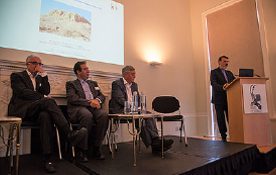
Prof. Hassan Fazeli Nashli, Dr Jebrael Nokandeh, Dr John Curtis, HE Dr Hamid Baeidinejad
The Sialk conference proper began after lunch on 2nd July. The conference was organised by IHF with the support of the British Institute of Persian Studies (BIPS). Participants were welcomed by Vahid Alaghband on behalf of IHF and by Professor Charles Melville on behalf of BIPS. The subject was briefly introduced by Dr John Curtis (IHF) who explained that the importance of Tappeh Sialk was accounted for by its strategic location by an oasis lying on an important trade route on the edge of the Great Salt Desert (Dasht-e Kavir). He described how the ancient ruins of Sialk had been found in two mounds, the North Mound which was occupied from the Neolithic period (c. 6000 BCE) down to around 4900 BCE, and the South Mound, where occupation dates from the period between around 4100 BCE and some time in the 1st millennium BCE. There were also two cemeteries, Necropolis A and Necropolis B. Excavations at the site had been conducted by Professor Roman Ghirshman between 1933 and 1937, by Dr Sadegh Malek Shahmirzadi between 1999 and 2005, Professor Hassan Fazeli Nashli in 2008-9 and by Dr Mohsen Javeri in 2015. The finds from Sialk are now mainly divided between the National Museum of Iran and the Musée du Louvre, with a small number (mostly without provenance) in museums around the world. Objects from Sialk had been included in several recent exhibitions such as that in Bonn in 2017.
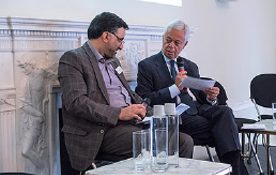
Mr Hamid-Reza Momenian and Mr Vahid Alaghband
Dr Toby Wilkinson (University of Cambridge) provided the background to the conference by considering Tappeh Sialk in time and space with special reference to ecology and connectivity.
Dr Fereidoun Biglari (National Museum of Iran) reviewed the evidence for hunter-gatherers at the edge of the Dasht-e Kavir in the Palaeolithic period, and although there is no Palaeolithic occupation at Tappeh Sialk there are a number of Middle and Upper Palaeolithic sites in the vicinity of Kashan.
Professor Hassan Fazeli Nashli (University of Tehran) and Dr Jebrael Nokandeh (National Museum of Iran) proposed a framework for the chronology of Sialk North and Sialk South based largely on radiocarbon dates.
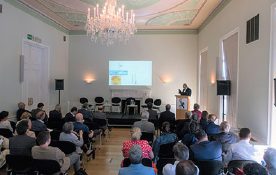
Professor Roger Matthews (University of Reading) put Neolithic Sialk into a wider context by showing a map of Iran with nearly 80 other Neolithic sites, by describing plant and animal domestication across Iran at this period, and describing some of the material networks that had been identified, trading for example cowrie shells and obsidian.
Dr Armineh Kaspari-Marghussian (Durham University) talked about continuity and change in pottery manufacture at Tappeh Sialk in the Late Neolithic ( 6000-5200 BCE) and Transitional Chalcolithic ( 5200-4900 BCE) periods (Sialk I-II). She was able to show through scienti!c analysis that the potters of Sialk II were able to produce the characteristic red pottery with black painted decoration because of their mastery of firing techniques, including precise control of firing temperatures and oxidisation.
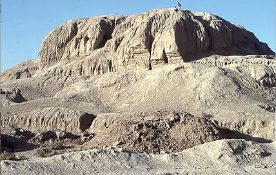 Dr Sima Yadollahi (independent scholar) described the rich geometric and figural decoration on pottery of the Sialk III period (Chalcolithic, c. 4100-3350 BCE) and considered how the styles and symbols could help us to understand the cognitive processes of the ancient potters, that is, the significance for them of the various decorative schemes. This was considered under five headings: 1- art and aesthetics; 2- symbolism; 3- neuropsychology; 4- ritualism; 5- exaggeration.
Dr Sima Yadollahi (independent scholar) described the rich geometric and figural decoration on pottery of the Sialk III period (Chalcolithic, c. 4100-3350 BCE) and considered how the styles and symbols could help us to understand the cognitive processes of the ancient potters, that is, the significance for them of the various decorative schemes. This was considered under five headings: 1- art and aesthetics; 2- symbolism; 3- neuropsychology; 4- ritualism; 5- exaggeration.
Professor Barbara Helwing (University of Sydney) reviewed the Late Chalcolithic occupation at Sialk (period IV) and the nearby site of Arisman when the flourishing proto-Elamite civilization (c. 3350-2900 BCE) was evidenced at both sites. This civilization, characterised by pictographic tablets and elaborate seals and sealings, has been noted at other sites in Iran as far away as Susa and Tappeh Yahya. During this period, there were extensive trading contacts to areas to the west and east of Iran.
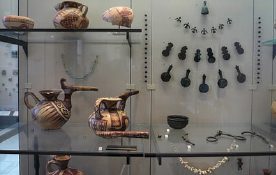
Case of Sialk material in the Louvre Museum
Professor Dr Stefan Kroll (University of Munich) showed that three double-handled pottery tankards found by Ghirshman at Sialk belong to a Median ceramic tradition (7th-6th century BCE) as evinced at Nush-i Jan, Godin Tepe, Bastam and other sites in Iran as well as in Armenia, Turkmenistan and Eastern Anatolia. Professor Michael Danti (American Schools of Oriental Research and University of Pennsylvania) talked about ‘The connections between Tappeh Sialk and Hasanlu’. He started by outlining the results of the survey he had undertaken in 2005 in an area 30kms around Tappeh Sialk as part of the Sialk Reconsideration Project. Although periods identified included Neolithic and Sasanian, the majority of sites investigated were Middle Islamic to modern. He then referred to points of contact between Sialk and Hasanlu, more than 600km to the north-west in Azerbaijan. These were best shown by button-based beakers with a single handle in grey burnished pottery found in Necropolis A at Sialk and in Hasanlu dating from period V, c. 1200-1000 BCE.
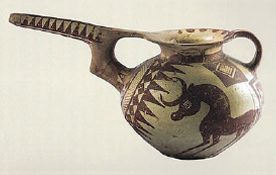 Dr Mehrdad Malekzadeh (Iranian Centre of Archaeological Research) described the mass of mud brick referred to by Ghirshman as “la grande construction” and interpreted by Dr Malek Shahmirzadi as a ziggurat of the 3rd millennium BCE, and demonstrated that the associated pottery and stamped bricks showed it should be dated to the 1st millennium BCE. He compared this platform with those at Persepolis and Susa and suggested the Sialk platform should be viewed as a Median precursor to those.
Dr Mehrdad Malekzadeh (Iranian Centre of Archaeological Research) described the mass of mud brick referred to by Ghirshman as “la grande construction” and interpreted by Dr Malek Shahmirzadi as a ziggurat of the 3rd millennium BCE, and demonstrated that the associated pottery and stamped bricks showed it should be dated to the 1st millennium BCE. He compared this platform with those at Persepolis and Susa and suggested the Sialk platform should be viewed as a Median precursor to those.
Dr Reza Naseri (University of Zabol) reviewed the more than 70 bricks from Sialk with stamped !gural and geometric decoration and he also showed illustrations of comparable stamped bricks found at the nearby sites of Shamshirgah, Qolam Tappeh-i Ja’far Abad, and Qoli-Darvish. He dated these bricks to the Iron II and Iron III periods and believed them to be a hallmark of Median art and Median influence.
Professor Oliver Watson (University of Oxford) showed that Kashan was a centre of ceramic innovation in the 12th and 13th centuries CE, famous for its minai enamelled ware, lustre pottery and lustre tiles. This innovation was made possible through the introduction of fritware (or stone paste ware, consisting of ground quartz) which had been developed in Egypt. Kashan wares were widely exported, but the sites of the potters’ workshops in Kashan have not yet been identified.
Dr Nima Nezafati (Islamic Azad University) reviewed ancient mining and archaeometallurgical studies at Sialk, and showed that both copper and silver were produced at Tappeh Sialk in periods III-IV by pyrometallurgy. Interestingly, the copper sources of the smelters of the North Mound (Sialk I and II) and the South Mound (Sialk III-IV) were different. He also identified the ancient mines in the vicinity of Kashan that could have supplied the ore for copper and silver production.
Dr François Bridey and Dr Julien Cuny (Musée du Louvre) reviewed the finds from Ghirshman’s excavations at Sialk now in Paris and the archives relating to the excavations, consisting of photographs, plans and notebooks, both of Ghirshman and other expedition members, and Louvre acquisition registers. They also described the changing displays of Sialk material in the Louvre.
Mr Hossein Mahlouji (Kashanica Foundation) described the significant achievements of the Kashanica Cultural Heritage Foundation, privately funded since 1993. Amongst those achievements were the organisation of many seminars and the publication of many books, including the Kashanica Encyclopaedia. In Kashan many old buildings had been restored, some as private houses, some for public use, some for museums, and some for traditional crafts, such as carpet-weaving, dyeing, and making pottery.
Dr Mohsen Javeri (University of Kashan) spoke about the challenges involved in preserving Tappeh Sialk and the constraints. Sialk had been registered in the national heritage list of Iran on 16th September 1931 and an exclusion zone had been proposed in March 1985. There was now a new proposal for establishing boundaries around the main site and conserving that area. Amongst the problems were illegal construction and illegal asphalt-making in the restricted zone. Dr Javeri also showed us the locations of 11 test trenches that had been dug in 2015 to establish the limits of occupation.
Mr Hamid-Reza Momenian (Governor of Kashan) spoke about the significance of Sialk and how its location was crucial for connectivity within the region.
Mr Momenian also emphasised the issues facing local authorities in protecting the site, including the fact that much of it is occupied. Since coming into office he has finalised the boundaries of the Sialk protected area and has ceased the transfer of land titles within this area. He has taken measures to discourage others from settling within the designated protected area, including denying power and water supplies or phone lines. He highlighted that there are bureaucratic difficulties in implementing the laws surrounding the protected area and stressed the need for engaging the local community in order to help enforce these rules.
In a brief closing session, involving Dr Nokandeh, Dr Biglari, and Dr Curtis, the following recommendations were agreed:
- The papers from the !rst Sialk conference on 31st March 2017 and the second Sialk conference on 2nd-3rd July 2018 should be fully published in an attractive volume to be edited in IHF.
- A digital record of all !nds and archives from Sialk should be created leading ultimately to the creation of a sophisticated interactive website. This should be facilitated through a partnership between IHF, the National Museum of Iran and the Louvre
- There should be two future Sialk conferences in Paris and in Germany.
- A Sialk International Advisory Committee should be established with the following members and IHF shall act as the secretariat: Dr Jebrael Nokandeh (Chair), Dr John Curtis (Secretary), Dr Fereidoun Biglari, Dr Michael Danti, Professor Barbara Helwing, Dr Mohsen Javeri, Professor Stefan Kroll, Mr Hossein Mahlouji, Professor Hassan Fazeli Nashli, Dr Nima Nezafati, Dr Marielle Pic, Dr Sadegh Malek Shahmirzadi.
It is intended that the papers delivered at the 2nd Sialk conference and selected papers from the 1st Sialk conference should bepublished as soon as possible, hopefully before the 3rd Sialk conference which may be in Paris.
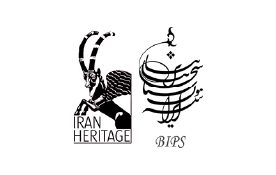
© Iran Heritage Foundation
August 2018